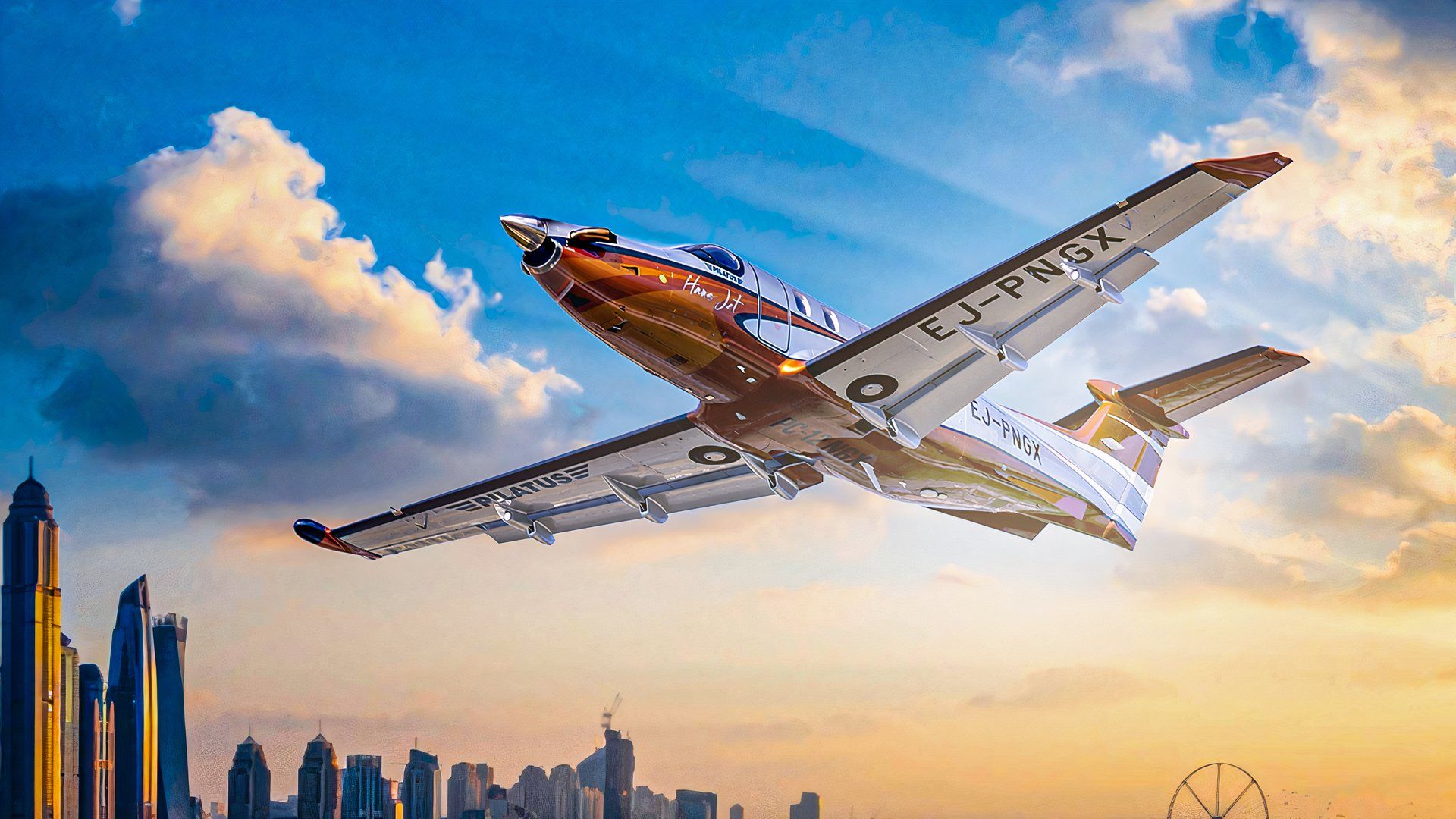Summary
- Pilatus Aircraft evolved from military to general aviation with the influential PC-12 aircraft.
- The PC-12 debuted in the early 1990s, designed for high-performance and single-engine operation.
- Impressive specs include a single-engine turboprop, short runway capability, and an adaptable cabin.
Pilatus Aircraft has been producing aircraft since it was founded in December 1939. The Swiss company was formed to build Supermarine Spitfires for the Swiss military under a new contract. Initially, the aircraft built and maintained aircraft for the Swiss military.
Eventually, the company evolved to create aircraft for more unique industries. In the 1950s and 1960s, Pilatus began creating aircraft capable of landing on short runways, which are designated as short takeoff and landing (STOL) aircraft. The company continued creating military aircraft through this time.

Related
A Look At All The Variants Of The Pilatus PC-12
A true ‘workhorse’ of an aircraft.
Pilatus eventually expanded its aircraft production into the general aviation industry. In the early 1990s, the company released the legendary PC-12, a single-engine aircraft that is powered by a turboprop engine. This high-performance aircraft revolutionized the general aviation industry after it was released. The aircraft is highly efficient and maintains excellent takeoff and landing performance. These features, among others, made it an obvious choice for owner-operators.
The addition of a cargo door variant also broke this aircraft into the cargo industry, and it is also used as a passenger aircraft for charter operators. Let’s take a closer look at how this aircraft came to be. Let’s also take a look at some of the unique features that make this aircraft so legendary.
Brief history of the PC-12
As previously mentioned, Pilatus first introduced the PC-12 in the early 1990s. However, the development of this aircraft began much earlier than that. The Swiss manufacturer first announced the PC-12 at the annual National Business Aviation Association (NBAA) convention in 1989.
The program was kept as a secret until then, although the first prototype was already under construction when it was announced.
Pilatus believed this newly introduced aircraft would fill a large gap in the general aviation market. The company intended to make this aircraft fly with high-performance measures, including a high top speed and large range, while still maintaining a single engine to maintain.
Photo: Pilatus Aircraft
Eventually, the first prototype flew its maiden flight in May 1991. This began a lengthy development and certification process for Pilatus. After some initial tests, Pilatus decided to redesign its wing and make it larger, and also add winglets, to help it achieve the intended performance. Eventually, the PC-12 was certified by the Swiss aviation authority, the Swiss Federal Office of Civil Aviation, in March 1994. The following July, the PC-12 was granted its type certificate by the Federal Aviation Administration (FAA).
The company has since released several upgraded variants of the PC-12. The first upgrade was certified in 1996 and was designated the PC-12/45. It included a larger maximum takeoff weight (MTOW) and several smaller improvements. Owners of the original PC-12 were given the ability to convert their aircraft into the new PC-12/45. The following upgrade was certified in 2005 and was called the PC-12/47. This again featured a higher maximum takeoff weight and interior upgrades.
The most recently introduced PC-12 upgrade was the PC-12HGX. This added a completely redesigned interior featuring windows that were 10% larger. It also included an upgraded engine, an autothrottle, and an improved Honeywell avionics system.
Interesting design features
As previously mentioned, the PC-12 is designed to have impressive performance measures while still utilizing a large cabin and only one engine. Pilatus put emphasis on only utilizing one engine, yet rivaling the performance of other twin-engined aircraft in the market. To accomplish this, Pilatus chose the Pratt & Whitney PT6A-67 turboprop engine. Newer, upgraded variants of the engine can reach over 1,200 shaft horsepower.
Photo: Pilatus Aircraft
Pilatus also uses a large cabin that is pressurized. Overall, this large cabin can fit a maximum of nine passengers. Some unique features of the cabin include an enclosed lavatory and a refreshment center towards the front of the aircraft. However, the cabin itself is completely customizable. This allows military or cargo operators to adjust the cabin as needed. For example, several governments use the PC-12 in their fleets, including:
- United States Air Force
- United States Special Operations Command
- Finnish Air Force
- Irish Air Corps
- Swiss Air Force
- Western Australia Police
- Ontario Provincial Police
The PC-12 has also been customized into an air ambulance. The South African Red Cross Air Mercy Service and the Royal Flying Doctor Service use this aircraft for their medical transport services.
Impressive performance measures
As previously mentioned, the PC-12’s single turboprop engine helps power the aircraft. This powerful engine helps it maintain impressive short-field performance, among other measures. Specifically, the aircraft can take off on runways that are 2,485 feet long, and it can land on runways that are just over 2,150 feet in length. The PC-12 also has the ability to land on dirt runways, expanding the areas where the aircraft can perform in.
Photo: Pilatus Aircraft
This aircraft has the following specifications:
|
Length |
47 feet three inches |
|---|---|
|
Wingspan |
53 feet five inches |
|
Height |
14 feet |
|
Maximum takeoff weight (MTOW) |
10,450 pounds |
|
Cruise speed |
285 knots (328 miles per hour) |
|
Range |
1,845 nautical miles (2,123 miles) |
|
Rate of climb |
1,919 feet per minute |
|
Service ceiling |
30,000 feet |
Beyond the impressive performance specifications, the PC-12 also utilizes the Honeywell Primus Apex avionics suite. It can be flown by two pilots, although it is approved for single-pilot operations.




